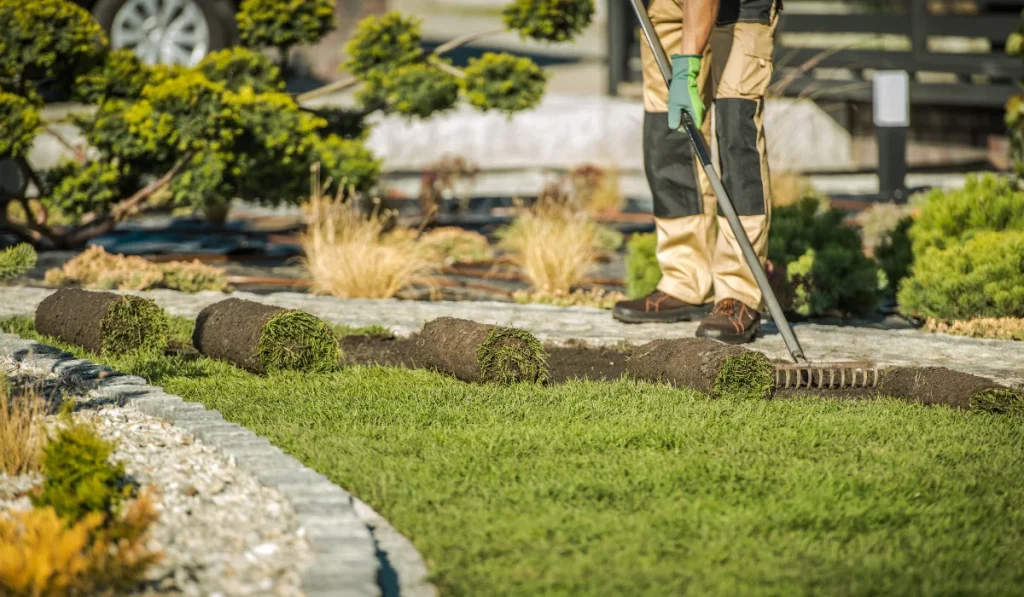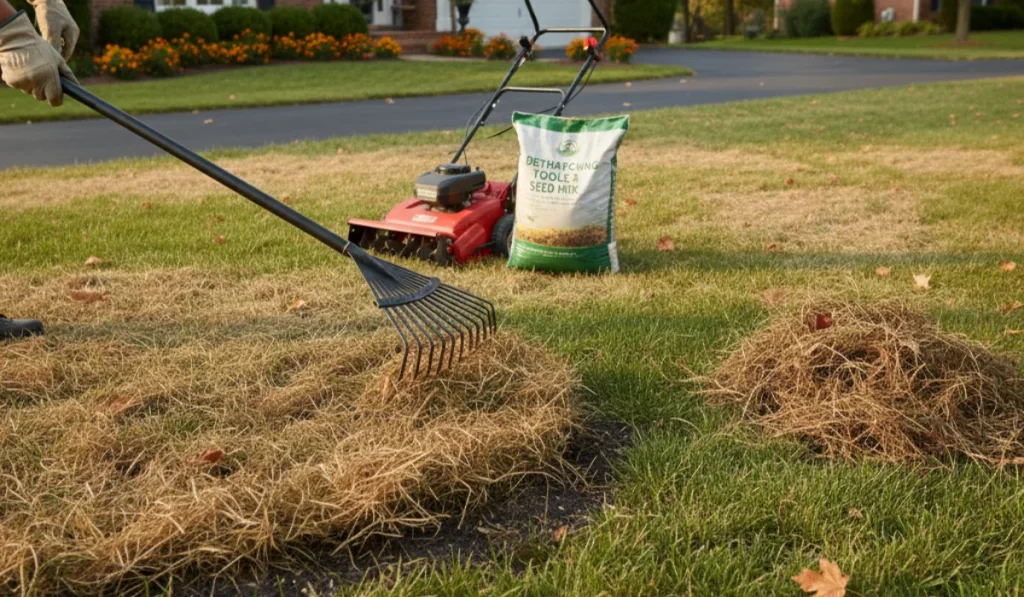Ever wonder when the perfect time is to plant Bermuda grass in California to achieve that lush, green lawn? Bermuda grass is a popular warm-season grass, but its optimal growth requires precise planting timing.
Keep reading to find out the best planting window for your region for thriving turf grass.
Key Takeaways
- Depending on soil temperature and weather, Bermuda grass grows best when planted in early spring or fall.
- In California, coastal areas do well with late spring planting, while inland regions need earlier planting.
- Watering often at first helps Bermuda grass grow, but after the roots are strong, deep watering twice a week works best.
- Regular mowing, feeding, and pest control keep Bermuda grass healthy and ready to handle hot weather and foot traffic.
The Best Season to Plant Bermuda Grass
Planting Bermuda grass at the right time may provide the best seed germination and root development environment. This ensures lush growth and healthy lawns.
Spring
Early spring planting offers various benefits for Bermuda grass. You get a head start on the growing season, which allows the grass to establish before the summer heat.
At this time, soil temperatures are warming but not excessively hot. It creates ideal conditions for germination in your new lawn. Overseeding during this period can help thicken the lawn.
| Spring Planting Guide | Details |
|---|---|
| Temperature | Bermuda grass comes out of dormancy when the soil is consistently 55°F or higher. |
| Water Requirements | Keep soil consistently moist until the grass is well-established, usually after 2-3 weeks |
| Sunlight Needs | Plant in areas that receive full sun for at least 6-8 hours a day |
| Weed Control | Apply a pre-emergent herbicide to prevent weed growth like crabgrass |
Fall
Fall planting at least 90 days before cold weather sets in also has advantages. The soil remains warm enough for germination, yet the daytime temperatures are typically cooler than summer.
In regions with mild winters, this can foster a growth habit that can develop deep root growth without the stress of extreme heat.
| Fall Planting Guide | Details |
|---|---|
| Soil Preparation | Remove any lingering summer weeds and loosen the soil using mulch |
| Water Requirements | Water deeply once a week to encourage root growth before winter |
| Sunlight Needs | Ensure the area still receives 6-8 hours of sunlight daily despite shorter days |
| Climate Considerations | Bermuda grass will not grow in cold temperatures. Rather, it goes into dormancy and lays like a carpet until the spring time. |
Regional Considerations in California
In California, Bermuda grass planting may vary depending on regional climates. These variations can depend on specific distinctions between coastal and inland areas and differences between northern and southern California.
Coastal vs. Inland Areas
Milder temperatures and higher humidity characterize coastal regions in California. They are best suited for planting Bermuda grass in late spring or early summer. This timing takes advantage of the warm yet moderate climate, ideal for grass establishment.
Conversely, inland regions like the Central Valley experience much hotter and drier conditions. Here, Bermuda grass can be successfully planted a bit earlier, often starting in late spring.
Due to the increased heat and lower humidity, effective irrigation is needed to address faster evaporation.
Northern vs. Southern California
In Northern California, where the climate is cooler and there is more rainfall, late spring is ideal for planting Bermuda grass. This timing ensures the soil has warmed sufficiently. The cooler summer temperatures also allow for less frequent watering.
In contrast, Southern California’s warmer climate and lower rainfall may need early planting in early spring. This strategy maximizes the longer growing season typical in other southern states. Due to the intense sun and dry conditions, consistent watering can support the southern lawn’s growth phases.
Bermuda Grass Lawn Care and Maintenance
After planting, proper lawn care involves preventing your Bermuda grass from turning brown. With a correct routine, you can guarantee a healthy turf that withstands the hot summer months and heavy foot traffic.
Watering Schedule
When you plant Bermuda grass seeds, they need frequent watering to establish a deep root system. This is also true when sowing perennial ryegrass, which often complements Bermuda grass in transitional zones.
You must water lightly several times daily to keep the soil moist. After the grass establishes roots, reduce the frequency to twice a week. Deep watering involves wetting the soil at least 6 inches deep to reach the rhizomes and stolons.
Fertilization
Unlike Zoysia and St. Augustine, more frequent feeding of Bermuda grass can keep your lawn green. Apply a high-nitrogen fertilizer (16-4-8) about 4-6 weeks after planting. Continue fertilizing every 6-8 weeks during the growing season.
Conduct a soil test to determine specific nutrient needs. Pay attention to signs of nutrient deficiencies, such as yellowing or thinning grass.
Mowing Practices
Mowing Bermuda grass lawns about once a week encourages a dense and uniform appearance. Begin mowing when the grass reaches about 2 inches in height. Set your mower to cut the grass at 1-1.5 inches tall.
Unlike tall fescue grass, frequent mowing prevents Bermuda grass from getting too long and thatchy. Always use a sharp mower blade to avoid tearing the grass. Alternating mowing patterns can reduce soil compaction, ideal for golf courses and sports fields.



